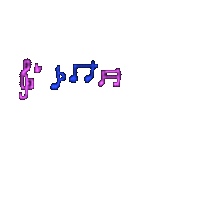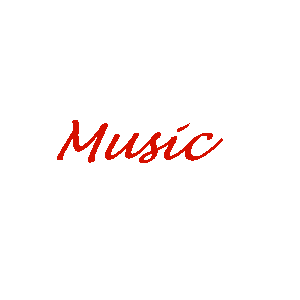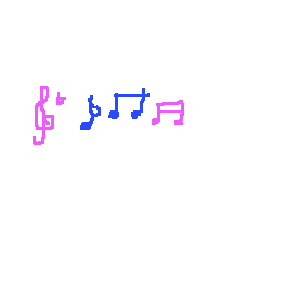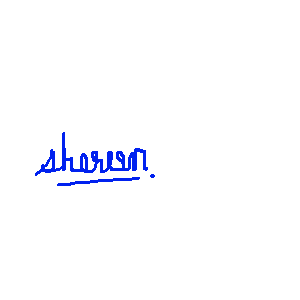

Welcome everybody
to Shereen's
homepage!!
First of all,
I would like to acknowledge a few people who have one way or another inspired
and prompt me to create this website on the something I have grew up with;
my first love~...music .
 To
my parents, Tony & Jean....for their unending support and love,
To
my parents, Tony & Jean....for their unending support and love,
 My
sisters, Marlene...my mentor, Lilian...my music analyst,
My
sisters, Marlene...my mentor, Lilian...my music analyst,
My brother....my
beat and tempo master,
 To
my computer lecturer, Ms. Jasmine Low....my ever patient, composed
and elegant educationist.....(oh yah!she's evaluating this!!) and
To
my computer lecturer, Ms. Jasmine Low....my ever patient, composed
and elegant educationist.....(oh yah!she's evaluating this!!) and
 To
author, Roger Kamien.....who have taught me a great deal about appreciating
music in his book.
To
author, Roger Kamien.....who have taught me a great deal about appreciating
music in his book.
Music is very much part of us. It is definitely for me because I believe
it keeps me alive. I named this website Music Appreciation because we need
to appreciate thus enjoying the serene effect music has for our souls....the
healer for our souls. Imagine our life without music....life would be so
empty.
Basically what I have done here is to bring all of you through time with
a few facts and types of music in each period of time.. I would try
to update it from time to time if time permits. Browse through my webpages
and if you have anything to add on, please e-mail
to me. Remember, music is a universal language!!
Music
in the Middle Ages
A thousand years of European history are spanned by the phrase Middle
Ages. Beginning around 450 with the disintegration of the Roman empire,
this era witness the 'dark ages', a time of upheavals, migration and wars.
But the later Middle ages(until about 1450) were a period of cultural growth:
romanesque churches and monastries(1000-1150) and gothic cathedrals(1150-1450)
were constructed, towns grew, and universities were founded.
Music
in the Renaissance
The fifteenth and sixteenth centuries in europe have come to be known
as the Renaissance, People the spoke of 'rebirth' and 'renaissance' of
human creativity. It was a period of exploration and adventure in all horizons
of life. This includes music. Music was greatly expended and with the invention
of printing, the circulation of music is widened thus increasing the number
of composers and performers. As in the middle ages, vocal music was more
important than instrumental music.
Baroque Music
Though the word baroque has at various times meant bizarre, flamboyant
and elaborately ornamented, modern historians use it simply to indicate
a particular style in art Baroque style in music changes during this short
period of time whereby some music was composed for text conveying extreme
emotion and the text rule the music and with that opera is created. Later
some of the music was created for instruments..instrumentall music. And
the emphasis through this period is diferrent....homophonic texture than
polyphony.
The Classical
Period
There was a transitional time from baroque style ot the full flowering
of the classical style.Polyphonic texture were neglected in favor if a
tuneful melody and simple harmony. Here composers offer contrast of mood
and theme, light and graceful music. Classical music offers a variety of
emotions that would actually fluctuate emotions. Melody lines are most
easy to remember and it is tuneful.
The Romantic
Period
Composers of the romantics period continued to use the musical form
of the classical period. The romantic preference for expressive, song like
melody also go out out of classical style.. The difference between them
are that music in Romantic period tend to have greater ranges of color,
dynamic and pitch. Also harmonic vocabulary is broader.
The Twentieth
Century
During the twentieth century, differences among styles have been so
great that it seems composers use different musical languages, not merely
dialects of the same musical language. radical changes of style occur even
within the works of individual composers.

If you have any inquiries, e-mail
to me alright!!
Copyright.1999.shereen.t.s.t

![]() To
my parents, Tony & Jean....for their unending support and love,
To
my parents, Tony & Jean....for their unending support and love,
![]() My
sisters, Marlene...my mentor, Lilian...my music analyst,
My
sisters, Marlene...my mentor, Lilian...my music analyst,
![]() To
my computer lecturer, Ms. Jasmine Low....my ever patient, composed
and elegant educationist.....(oh yah!she's evaluating this!!) and
To
my computer lecturer, Ms. Jasmine Low....my ever patient, composed
and elegant educationist.....(oh yah!she's evaluating this!!) and
![]() To
author, Roger Kamien.....who have taught me a great deal about appreciating
music in his book.
To
author, Roger Kamien.....who have taught me a great deal about appreciating
music in his book.




